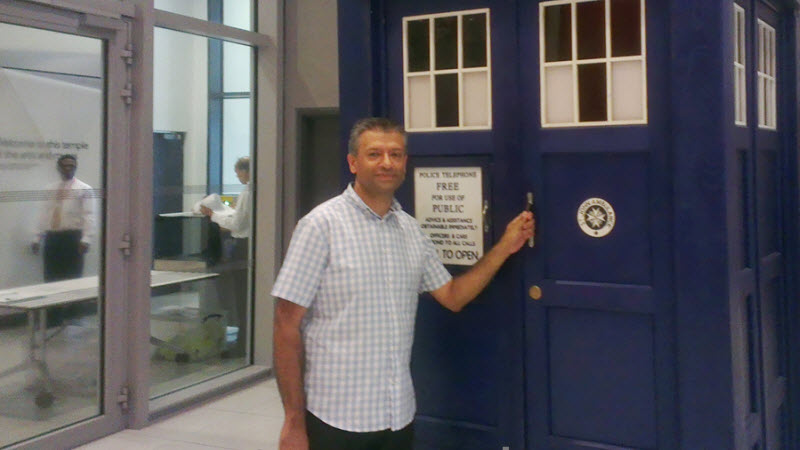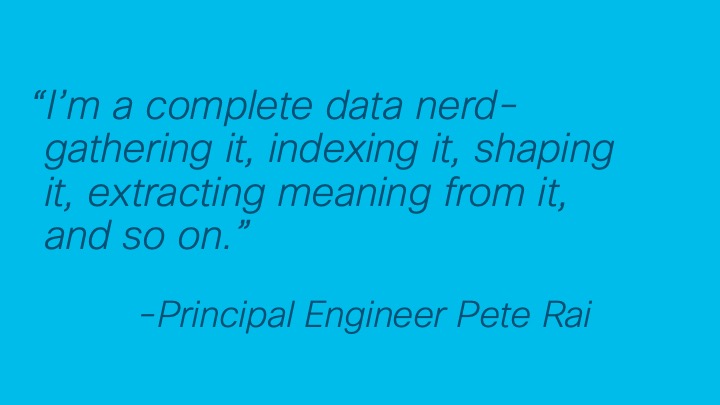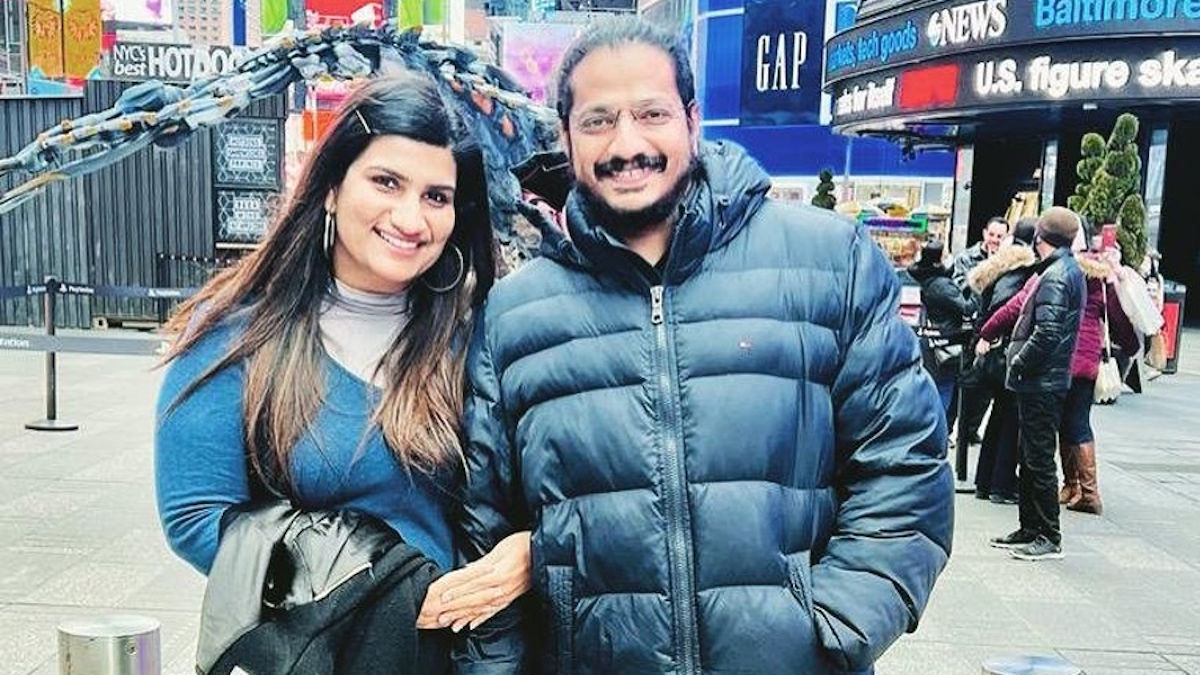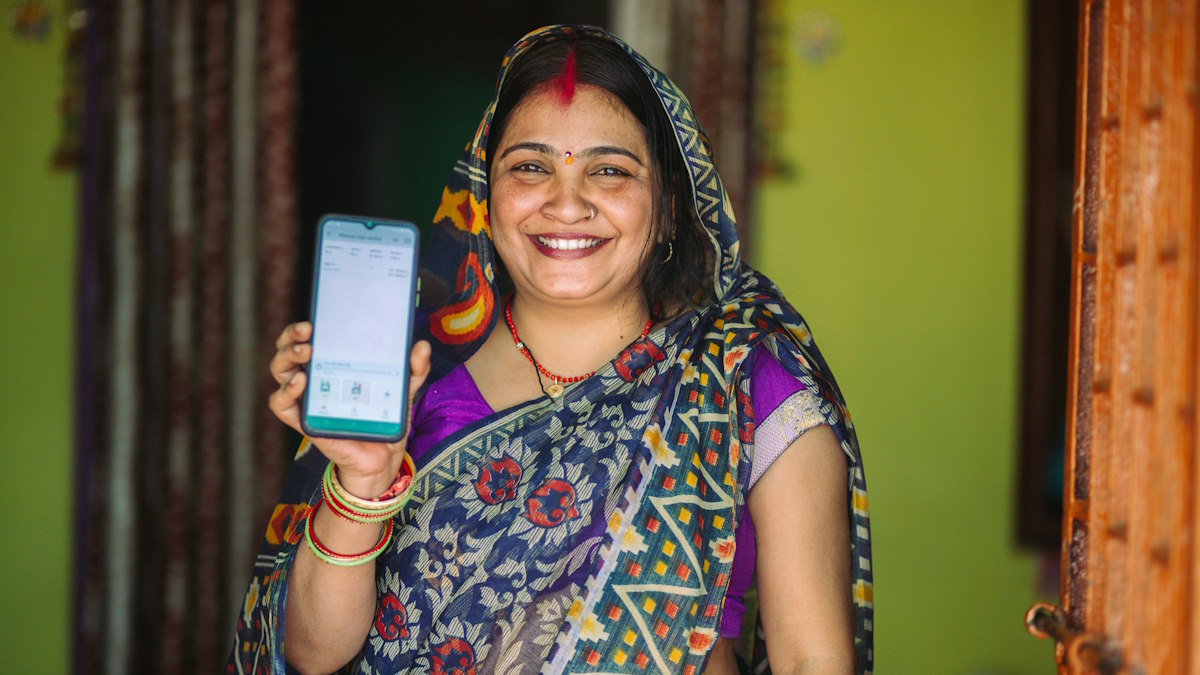Pete Rai sold his first piece of software at age 15 and has been writing code ever since.
If there was a reality TV show about people who hoard data, he would be the show’s undisputed star. A self-described data nerd, he still has every text message sent since his first mobile phone in 1998! Pete lives in Egham, near London, and has worked for Cisco for about six years, mainly at our Bedfont Lakes site.
Today, he’s turning his software expertise and obsession with data to exploring the foggy frontiers of technology — data management, data sharing, and other areas where the only certainty is ambiguity.
We spoke with him about innovation, the ethics of AI, and his advice for young engineers, among other things.
What is your role at Cisco? What are you currently working on?
Pete: I’m a Principal Engineer in Cisco’s Chief Technical and Architect Office (CTAO). We look for opportunities that can’t easily be addressed by other parts of Cisco — especially where it’s ambiguous as to what the right thing to do is, or whether there’s even a market.
Our role is to explore exciting spaces like quantum computing and AI as well as more traditional Cisco areas like 5G. We take what I call a “hands dirty” approach, try to make tangible working things and apply them to see if they solve real-world needs.
I’ve been looking at large-scale data management problems. For example, we’ve been exploring the idea of cities becoming software platforms. I led a team that built the main data platform for a smart city project in Manchester, England. We had mixed success because we discovered that most cities are not ready to become software platforms. They don’t understand what it means, and they don’t have the right people to make it work.
It’s a classic innovation dilemma — just because you can identify an opportunity doesn’t mean it’s a business.

Tell us more about what you are working on in data sharing.
Pete: In the future, companies will have to share their data, but currently, they don’t know how to do it, or they do it in ad hoc ways.
We’re trying to develop a solution that allows it to be done with a policy-based approach, allowing companies to share their data with confidence. This is a space we’re predicting is going to emerge soon. It might be a red herring, or it might be a huge opportunity.
Which technology can you talk about endlessly?
Pete: I’m a complete data nerd — gathering it, indexing it, shaping it, extracting meaning from it, and so on. I collect all my personal data — I have data about every single text or chat message I’ve ever sent, every item I have ever bought, and every movie I have ever seen!
As soon as the General Data Protection Regulation (GDPR) took effect in Europe last year, I went around and asked every single company for a complete data dump. The data holds key answers if we can just figure how to tease them out.

What does innovation mean to you?
Pete: For me, innovation is all about working on projects that really make a difference, improving lives, and lifting burdens.
For example, my platform plays a small part in our conservation efforts to stop the poaching of rhinos. We’ve also been working with the Trussell Trust, helping to end hunger in the U.K. — using their data to create better outcomes for those in food poverty and to drive policy changes at the government level.
There’s never been more opportunity for individuals to change the world in material ways. I think we’ll look back on these days in the same way we look back on the early days of the Industrial Revolution. We haven’t even scratched the surface!
Which engineer stereotypes annoy you the most? Which are totally true?
Pete: I don’t like that agile software development is an unquestioned approach to writing software. It’s given as a mantra, it’s on job descriptions, and so forth.
The actual manifesto as written is fantastic, but unfortunately, most implementations of it have reduced writing software to a banal factory activity — a denial of creativity. I fight against it. I don’t believe it leads to the best outcomes.
As for which stereotypes are true, the caricature of software engineers as geeks and nerds is accurate!
What have you learned when dealing with gray areas and exploring the unknown?
Pete: You have to be humble. You can’t claim to know where the future is. You can sit back and wait for the ambiguity to drift away, but the danger there is that the market will mature around you and you’ll miss your chance to influence it.
Our approach is to edge forward, listen, filter out the weak signals, create real things, and throw away what doesn’t work.
It’s like walking in the fog. You might have an idea where you’re going, but you shouldn’t expect a straight line, and you will bump into things and take knocks.
You’ve also been involved in the ethical use of AI. Can you tell us more about that?
Pete: AI could be absolutely transformational in terms of improving people’s health, education, climate, and so on.
But the danger is that we will inadvertently misuse it.
There’s a very real possibility that people might bake in implicit human biases or massively scale them up by a ratio of 100s or 1,000s. A whole bunch of companies are setting up principles around the ethical use of AI.
I’ve played a role in this — for example, representing Cisco on this issue with the U.K. government’s Centre for Data Ethics and Innovation. We are trying to develop a robust set of rules we can all play by without boxing in the engineering teams of the future. I’m working with researchers at University College London’s Digital Ethics Forum, whose work on this topic we hope to sponsor.
What advice would you have for someone just starting out as an engineer?
Pete: If you’re starting out now, you can’t do the things I was doing in the late 80s and 90s. At that time, the right thing to do was to have depth rather than scope.
But so much is happening now, I would advise a young person to go for scope. There are too many choices to take a bet on anything this early in your career.
Do things out of your comfort zone. Do things at home as well as at work. If you go home and you’re not interested in doing things there, perhaps you’re in the wrong line of work. And don’t just read about it — get your hands dirty, try it out, experiment, tinker. After a while, you’ll see where your natural interests lie.
Have you seen a shift in the skill set needed for engineering? If so, what skills are you developing for the future?
Pete: There’s a clear shift happening toward machine learning, which will quickly become the dominant paradigm. There’s a whole raft of tricky-to-reach problems that will become solvable. It’s a whole different way of looking at the world — a mathematical, statistical approach.
It’s easy to take a mathematician and cross-train them in a little software engineering than the other way around.
Interestingly, this presents an opportunity to improve the gender balance in the industry. The gender balance in computer science is very poor, but it’s not as bad in mathematics.
With this shift, if you’re working in the social sciences area — such as psychology, sociology, human rights — suddenly your skills will fit in. As a result, technology will become a lot more interdisciplinary because training models is not the same as writing code.
I work closely with school programs here in the U.K., and we have already started a few approaches to try to help girls take advantage of these new opportunities.
Editor’s note: Pete founded Aspire, a school mentoring program in the U.K. It pairs Cisco staff with children in local schools who are falling short of their potential. It’s run for five years and has helped over 100 kids.
###
We welcome the re-use, republication, and distribution of "The Network" content. Please credit us with the following information: Used with the permission of http://thenetwork.cisco.com/.



